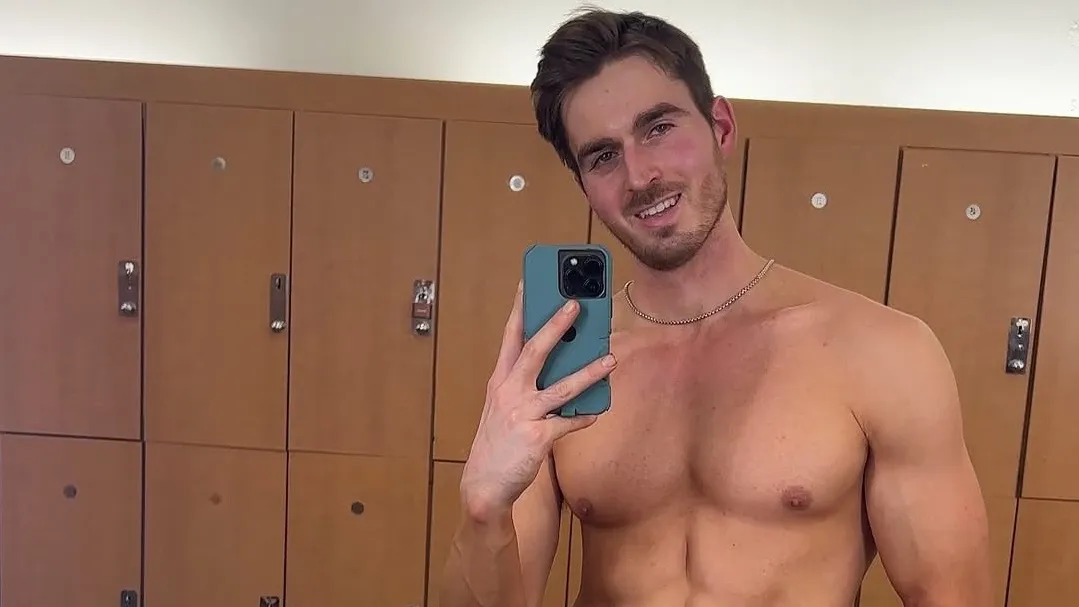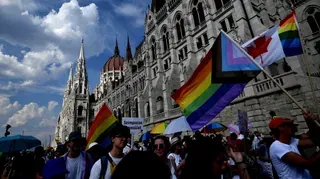March 25, 2014
EDGE 10.0: The Decade in Parties
Steve Weinstein READ TIME: 7 MIN.
In celebration of our tenth anniversary, EDGE is proud to launch "EDGE 10.0: The Decade in," a retrospective series of features looking back on the past ten years of headlines, politics, personalities, trends, music, film, parties, etc... written by Editor in Chief Emeritus Steve Weinstein, and the current editorial staff at EDGE.
In its 10 years of existence, EDGE has become a leading force in LGBT media by presenting originally reporting and writing on news, entertainment and everything in between. But, being a site read by so many gay men (and their straight or female posse members), coverage of nightlife has been a part of the mix since the website's inception.
For the first year, EDGE pretty much stayed close to its roots in Boston and southern New England, although there were forays to the big annual parties in Miami and elsewhere. In 2005, however, when coverage was extended to New York City and Provincetown - the proverbial city that never sleeps and the world-famous gay beach resort town - nightlife articles understandably snowballed.
In 2007, EDGE did its first major feature on producer Ric Sena, whose Alegria parties are such an important part of New York's party landscape. The article detailed where Sena gets his inspiration to maintain Alegria as a gold standard brand name for gay parties in this country: "Ric is from Rio, a city that puts on the most extravagant parade in the world every year like clockwork."
From its beginnings, EDGE had been covering Ptown, of course; as the shore favored by Bostonians and other New Englanders, it was always on the site's radar. But after adding a Provincetown portal, the parties became a major focus, starting with a profile of DJ Adian, a South African native who was spinning at one of David Flowers Summer Camp events in 2005. "For Provincetown," the DJ said, "my sound is energetic progressive beats with melodic breakdowns. Beautiful music, beautiful vocals, but driving beats."
When the iconic DJ Junior Vasquez headed to Cape Cod two years later, that was a very big deal. In a story headlined "Junior Vasquez's Ptown debut is Saturday's hottest ticket," EDGE noted that "in addition to his peerless skills as a DJ, re-mixer and dance music innovator, Vasquez - born Donald Mattern - actively scripted his backstory as New York's No. 1 DJ. He brought the music, but he also initiated the drama."
Vasquez opened up about his battle to overcome crystal meth addiction and his warning about hook-up sites. The guys, he said, are "most tweakers" who "get high and spend hours on their computers looking for sex." Vasquez called himself "a DJ first, but I'm also a showman, acting in the role of a DJ."
Vasquez's interview sounded a warning about troubles besetting parties: drugs and the Internet. That's what makes parties like Alegria, Miami's and Palm Springs' White Party, and New York's Pier Dance and Black Party stand out long-term survivors. EDGE@Night at Club Caf� in Boston may be only going on eight years, but it has managed to become an integral part of the Beantown gay party landscape.
Each time EDGE has added a city, there are more parties to cover, and each city brings its own scene. But when in two years (2007 and 2008), the site added Ft. Lauderdale, Miami, San Francisco, Los Angeles, Las Vegas and Fire Island, the Nightlife portal really exploded.
All of these cities are justly famous for their gay nightlife. In Miami, even with the hot crowds and great spaces in South Beach and the mainland, two annual events have come to define Miami style: the White Party and Winter Party. EDGE has always covered the White Party since it was held at Villa Vizcaya in 2004 right through the 2013 extravaganza at Soho Studios in 2013. Just as importantly, EDGE has been a longtime sponsor of this Thanksgiving Weekend fundraising series that brings a huge cash infusion to Care Resource, Miami's major AIDS service organization.
More than just giving some ad space in return for being another blip at the bottom of a party's name, EDGE has developed a close working relationship with several of the biggest parties, perhaps none closer than the Gay Days sequence that takes place in early June in Orlando. EDGE has also maintained a presence at the other White Party, the one held in Palm Springs.
These tie-ins give EDGE the opportunity to meet and greet readers "where they live," as it were. But when it comes to feet on the ground, nothing beats being there. EDGE's intrepid correspondents have long been reporting from the field, such as Jesse Kretizman's daily log during the 2008 Palm Springs White Party.
Another way EDGE has been interacting with readers is via the "Best of Nightlife" awards, won by popular vote. The first annual "Best of Nightlife" awards may have in recession-plagued 2008, "a trying year all around," as the awards intro put it, but the producers DJs and clubgoers "managed to show the diurnal world that creativity and magic flourish when the sun goes down."
Many of the inaugural winners showed how ephemeral indeed nightlife can be by folding within a few years of receiving their awards. Among them were New York's Mr. Black; "Evolve," tribal superstar DJ Victor Calderone's after-hours residency at Pacha, also in New York; Score in South Beach; Town in Washington, D.C.; and LIV, also in South Beach, which was named best new club.
There were, however, a handful of winners who are still very much with us, such as New York-based publicist Betty Kang, and Boston promoters Chris Harris and Rafael Sanchez. And the Saint at Large won the first of a long string of "Best Event Production" awards for the Black Party, which left its longtime New York home of Roseland Ballroom this year. But the Saint at Large vows to continue the madness, music and mayhem at a yet-to-be-determined location.
Many have written off the major gay events collectively known as "the Circuit" as outdated, elitist, lost in a world where gay men have different priorities. Or maybe it's just that there are more and more varied options available, so it only seems that the old "one size fits all" (perfect Suit Size 40, 30-inch waist) definition of a gay party has lost its usefulness.
Take, for example, the Blowoff parties. As a 2008 headline explained, "Blowoff remakes the gay party scene." Blowoff, the article explained, "is welcoming to guys of walk of life, regardless of body type." The parties are particularly popular with - but hardly limited to - bears.
I just experienced this year's (2014) Black Party, the mega fetish-themed 18-hour dance party that heralds the advent of spring, and one that EDGE has chronicled every year. What was remarkable was the diversity of the dance floor: a neat and almost-equal mix of young, adult, middle-aged; white, black, Asian; buff, bear and barely there.
On the other side of the mix, EDGE has noted several times how much Montreal's mammoth Black & Blue, as well as that city's Divers/Cit� festival, point the way to a more universal dance floor. Both parties are equally popular with gay and straight revelers, and in Montreal at least, no one gives a damn about who's dancing next to him.
"There was no friction between sexual orientations," wrote Mickey Weems on EDGE way back in 2007 about Black & Blue. "It doesn't matter if you are straight or gay or skinny or fat," one of the organizers told him. "Everyone is there to celebrate, to dance, to have fun. That's what life should be."
Steve Weinstein has been a regular correspondent for the International Herald Tribune, the Advocate, the Village Voice and Out. He has been covering the AIDS crisis since the early '80s, when he began his career. He is the author of "The Q Guide to Fire Island" (Alyson, 2007).



